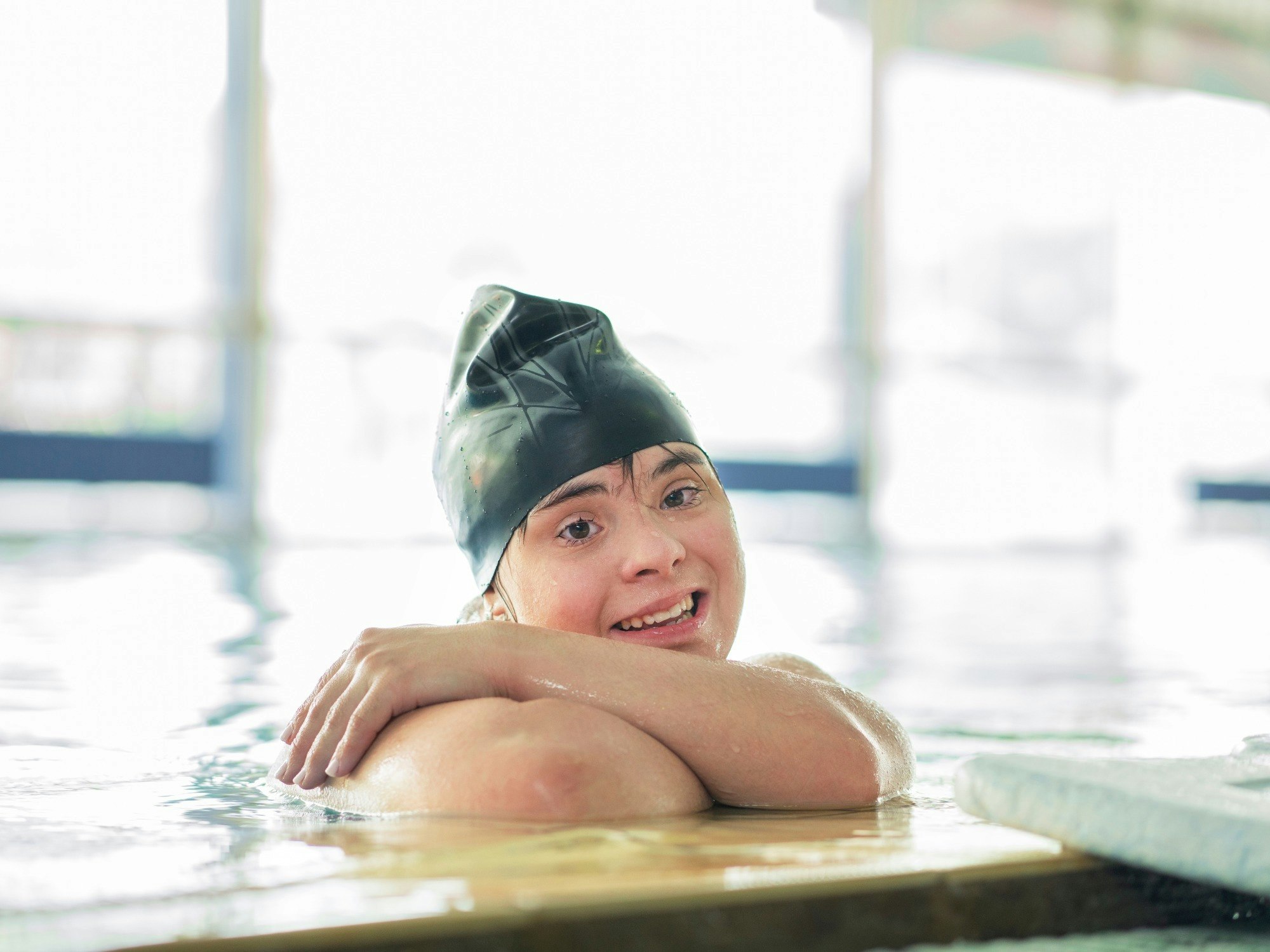What types of activities could I do?
Last updated

If you’re living with disability, there is still a wide range of sports and activities you can try.
Key points:
- Everyone, including people with disability, should participate in some form of exercise
- There are many activities, including extreme sports, that people with disability can participate in
- Before taking on a new sport or activity, you may want to discuss your plans with a GP or personal trainer
What could I try?
There are lots of different sports that can be adapted if you live with disability, and you can participate in these modified sports whether you live with disability or not. It depends on what your interests are.
You may want to try a couple of different sports before you settle on the ones that best suit you, or work with a personal trainer or doctor to find the right sport for you.
Some examples of activities you could try include:
- Swimming – excellent for relieving strain on the body and allowing movement without a lot of effort. If you’d like to get involved, you can contact Swimming Australia for more information or to find a swimming club near you
- Wheelchair basketball – The rules of the game are based on the standard rules but with changes to allow the use of wheelchairs. It is played by someone with a physical disability that prevents them from running, jumping and pivoting as a non-disabled player would. To find out more, you can contact Basketball Australia
- Wheelchair Aussie Rules – Based on AFL, Wheelchair Aussie Rules can be adapted to the age and ability of the participant. There is no kicking involved in wheelchair Aussie Rules, only handballing and passing. It is normally played indoors on a basketball or netball court. To find out more, you can contact Disability Sports Australia.
- Horse riding – Horse riding is a recreational activity that can help improve motion, balance, muscle strength and coordination as well as help people with disability bond with an animal. To find out more, visit Riding for the Disabled Association of Australia
- Para-archery – Competitors shoot arrows at a target marked with ten scoring zones, from a set distance. It is also very similar to non-disabled archery with athletes shooting the same number of rounds, distances and events. To find out more, visit Archery Australia
- Para-table tennis – Athletes with either physical or intellectual disability can play table tennis. To find out more, visit Table Tennis Australia
- Cycling – This sport offers options for a number of different disabilities and some of the types of bikes used by people with disability are:
- Tandems: used by people who are visually impaired
- Handcycles: used by quadriplegics, paraplegics or amputees of one or both lower limbs
- Tricycles: used by athletes with a brain injury who need more stability due to their limitation
- Standard bikes: used by athletes with a mild brain injury, amputation or any other form of disability of their upper or lower limbs
- Boccia – Competing in wheelchairs, competitors throw, kick or use a ramp device to propel leather balls as close as possible to a white ball called the ‘jack’. To find out more, visit Boccia Australia
- Goalball – Goalball is exclusively for those with a vision impairment. The object of goalball is to roll a ball into the opponent’s goal while the opposing players use their bodies to block the ball.
Whilst these are only a few suggestions of sports that have been adapted to be accessible for people with disability, the possibilities are endless. For more ideas and inspirational stories, visit the Disability Sports and Recreation website.
Extreme sports!
For those seeking an adrenaline rush, there is also the option of trying more extreme sports. You may want to follow in the footsteps of Mark ‘Mono’ Stewart, who has had his right leg amputated above the knee and give surfing a go. In September 2015, at the age of 53, he won the inaugural International Surfing Association World Adaptive Surfing Championship in La Jolla, California.
In June 2016 he competed in the first Australian adaptive surfing titles and took out two divisions to qualify for the world titles.
He most recently took out the 2019 US Open Adaptive Surfing Championships in the kneel category.
If the sun, surf and sand aren’t your thing then maybe give winter sports, like skiing, a go.
One of Australia’s successful athletes is Michael Milton, a former Australian Paralympic skier, cyclist and para-triathlete.
He is considered one of the most successful Australian Paralympic athletes in the Winter Games with six gold, three silver, and two bronze medals.
He also holds the Australian downhill speed skiing record, beating the speeds set by non-disabled skiers. His personal best downhill speed is 213 km/h.
Other types of extreme sports that have been made accessible for people with disability across Australia include:
- bungee jumping;
- indoor skydiving;
- scuba diving; and
- go-karting.
Tips for finding an activity
- Search what you might be interested in, your location and ‘disability friendly’ on the internet and see what results come up to help you find out what options interest you
- The ‘select-a-sport’ tool on the Paralympics Australia website can help you find a different sport to try
- Contact local sports clubs to find out if you are able to participate or they may be able to connect you with disability-specific teams. You can also look at contacting organisations like Disability Sports Australia for disability-specific sports
- Use Facebook forums and other social media to ask other people with disability and their families for recommendations in your area.
What sporting or recreational activities do you want to try?
Tell us in the comment section below.
Related content:
Staying fit and active with a disability
Recreation, sport and the NDIS
Exercising in a wheelchair or chair
Natalie’s story: Representing Australia in wheelchair basketball